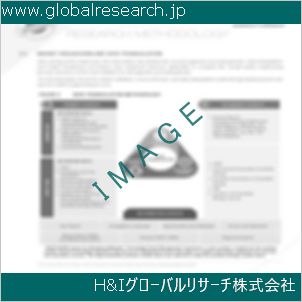Table of Contents
1 Industry Overview of Cobalt-60
1.1 Definition and Specifications of Cobalt-60
1.1.1 Definition of Cobalt-60
1.1.2 Specifications of Cobalt-60
1.2 Classification of Cobalt-60
1.3 Applications of Cobalt-60
1.3.1 Nuclear Application
1.3.2 Non-Nuclear Application
1.4 Industry Chain Structure of Cobalt-60
1.5 Industry Overview and Major Regions Status of Cobalt-60
1.5.1 Industry Overview of Cobalt-60
1.5.2 Global Major Regions Status of Cobalt-60
1.6 Industry Policy Analysis of Cobalt-60
1.7 Industry News Analysis of Cobalt-60
2 Manufacturing Cost Structure Analysis of Cobalt-60
2.1 Raw Material Suppliers and Price Analysis of Cobalt-60
2.2 Equipment Suppliers and Price Analysis of Cobalt-60
2.3 Labor Cost Analysis of Cobalt-60
2.4 Other Costs Analysis of Cobalt-60
2.5 Manufacturing Cost Structure Analysis of Cobalt-60
2.6 Manufacturing Process Analysis of Cobalt-60
3 Technical Data and Manufacturing Plants Analysis of Cobalt-60
3.1 Capacity and Commercial Production Date of Global Cobalt-60 Major Manufacturers in 2023
3.2 Manufacturing Plants Distribution of Global Cobalt-60 Major Manufacturers in 2023
3.3 R&D Status and Technology Source of Global Cobalt-60 Major Manufacturers in 2023
3.4 Raw Materials Sources Analysis of Global Cobalt-60 Major Manufacturers in 2023
4 Capacity, Production and Revenue Analysis of Cobalt-60 by Regions, Types and Manufacturers
4.1 Global Capacity, Production and Revenue of Cobalt-60 by Regions 2019-2024
4.2 Global and Major Regions Capacity, Production, Revenue and Growth Rate of Cobalt-60 2019-2024
4.3 Global Capacity, Production and Revenue of Cobalt-60 by Types 2019-2024
4.4 Global Capacity, Production and Revenue of Cobalt-60 by Manufacturers 2019-2024
5 Price, Cost, Gross and Gross Margin Analysis of Cobalt-60 by Regions, Types and Manufacturers
5.1 Price, Cost, Gross and Gross Margin Analysis of Cobalt-60 by Regions 2019-2024
5.2 Price, Cost, Gross and Gross Margin Analysis of Cobalt-60 by Types 2019-2024
5.3 Price, Cost, Gross and Gross Margin Analysis of Cobalt-60 by Manufacturers 2019-2024
6 Consumption Volume, Consumption Value and Sale Price Analysis of Cobalt-60 by Regions, Types and Applications
6.1 Global Consumption Volume and Consumption Value of Cobalt-60 by Regions 2019-2024
6.2 Global and Major Regions Consumption Volume, Consumption Value and Growth Rate of Cobalt-60 2019-2024
6.3 Global Consumption Volume and Consumption Value of Cobalt-60 by Types 2019-2024
6.4 Global Consumption Volume and Consumption Value of Cobalt-60 by Applications 2019-2024
6.5 Sale Price of Cobalt-60 by Regions 2019-2024
6.6 Sale Price of Cobalt-60 by Types 2019-2024
6.7 Sale Price of Cobalt-60 by Applications 2019-2024
6.8 Market Share Analysis of Cobalt-60 by Different Sale Price Levels
7 Supply, Import, Export and Consumption Analysis of Cobalt-60
7.1 Supply, Consumption and Gap of Cobalt-60 2019-2024
7.2 Global Capacity, Production, Price, Cost, Revenue, Supply, Import, Export and Consumption of Cobalt-60 2019-2024
7.3 USA Capacity, Production, Price, Cost, Revenue, Supply, Import, Export and Consumption of Cobalt-60 2019-2024
7.4 EU Capacity, Production, Price, Cost, Revenue, Supply, Import, Export and Consumption of Cobalt-60 2019-2024
7.5 China Capacity, Production, Price, Cost, Revenue, Supply, Import, Export and Consumption of Cobalt-60 2019-2024
7.6 Japan Capacity, Production, Price, Cost, Revenue, Supply, Import, Export and Consumption of Cobalt-60 2019-2024
8 Major Manufacturers Analysis of Cobalt-60
8.1 Manufacturer One
8.1.1 Company Profile
8.1.2 Product Picture and Specifications
8.1.2.1 Type I
8.1.2.2 Type II
8.1.2.3 Type III
8.1.3 Capacity, Production, Price, Cost, Gross and Revenue
8.1.4 Contact Information
8.2 Manufacturer Two
8.2.1 Company Profile
8.2.2 Product Picture and Specifications
8.2.2.1 Type I
8.2.2.2 Type II
8.2.2.3 Type III
8.2.3 Capacity, Production, Price, Cost, Gross and Revenue
8.2.4 Contact Information
8.3 Manufacturer Three
8.3.1 Company Profile
8.3.2 Product Picture and Specifications
8.3.2.1 Type I
8.3.2.2 Type II
8.3.2.3 Type III
8.3.3 Capacity, Production, Price, Cost, Gross and Revenue
8.3.4 Contact Information
8.4 Manufacturer Four
8.4.1 Company Profile
8.4.2 Product Picture and Specifications
8.4.2.1 Type I
8.4.2.2 Type II
8.4.2.3 Type III
8.4.3 Capacity, Production, Price, Cost, Gross and Revenue
8.4.4 Contact Information
8.5 Manufacturer Five
8.5.1 Company Profile
8.5.2 Product Picture and Specifications
8.5.2.1 Type I
8.5.2.2 Type II
8.5.2.3 Type III
8.5.3 Capacity, Production, Price, Cost, Gross and Revenue
8.5.4 Contact Information
…
9 Marketing Trader or Distributor Analysis of Cobalt-60
9.1 Marketing Channels Status of Cobalt-60
9.2 Traders or Distributors with Contact Information of Cobalt-60 by Regions
9.3 Ex-work Price, Channel Price and End Buyer Price Analysis of Cobalt-60
9.4 Regional Import, Export and Trade Analysis of Cobalt-60
10 Industry Chain Analysis of Cobalt-60
10.1 Upstream Major Raw Materials Suppliers Analysis of Cobalt-60
10.1.1 Major Raw Materials Suppliers with Contact Information Analysis of Cobalt-60
10.1.2 Major Raw Materials Suppliers with Supply Volume Analysis of Cobalt-60 by Regions
10.2 Upstream Major Equipment Suppliers Analysis of Cobalt-60
10.2.1 Major Equipment Suppliers with Contact Information Analysis of Cobalt-60
10.2.2 Major Equipment Suppliers with Product Pictures Analysis of Cobalt-60 by Regions
10.3 Downstream Major Consumers Analysis of Cobalt-60
10.3.1 Major Consumers with Contact Information Analysis of Cobalt-60
10.3.2 Major Consumers with Consumption Volume Analysis of Cobalt-60 by Regions
10.4 Supply Chain Relationship Analysis of Cobalt-60
11 Development Trend of Analysis of Cobalt-60
11.1 Capacity, Production and Revenue Forecast of Cobalt-60 by Regions and Types
11.1.1 Global Capacity, Production and Revenue of Cobalt-60 by Regions 2024-2029
11.1.2 Global and Major Regions Capacity, Production, Revenue and Growth Rate of Cobalt-60 2024-2029
11.1.3 Global Capacity, Production and Revenue of Cobalt-60 by Types 2024-2029
11.2 Consumption Volume and Consumption Value Forecast of Cobalt-60 by Regions, Types and Applications
11.2.1 Global Consumption Volume and Consumption Value of Cobalt-60 by Regions 2024-2029
11.2.2 Global and Major Regions Consumption Volume, Consumption Value and Growth Rate of Cobalt-60 2024-2029
11.2.3 Global Consumption Volume and Consumption Value of Cobalt-60 by Types 2024-2029
11.2.4 Global Consumption Volume and Consumption Value of Cobalt-60 by Applications 2024-2029
11.3 Supply, Import, Export and Consumption Forecast of Cobalt-60
11.3.1 Supply, Consumption and Gap of Cobalt-60 2024-2029
11.3.2 Global Capacity, Production, Price, Cost, Revenue, Supply, Import, Export and Consumption of Cobalt-60 2024-2029
11.3.3 USA Capacity, Production, Price, Cost, Revenue, Supply, Import, Export and Consumption of Cobalt-60 2024-2029
11.3.4 EU Capacity, Production, Price, Cost, Revenue, Supply, Import, Export and Consumption of Cobalt-60 2024-2029
11.3.5 China Capacity, Production, Price, Cost, Revenue, Supply, Import, Export and Consumption of Cobalt-60 2024-2029
11.3.6 Japan Capacity, Production, Price, Cost, Revenue, Supply, Import, Export and Consumption of Cobalt-60 2024-2029
12 New Project Investment Feasibility Analysis of Cobalt-60
12.1 New Project SWOT Analysis of Cobalt-60
12.2 New Project Investment Feasibility Analysis of Cobalt-60
13 Conclusion of the Global Cobalt-60 (CAS 10198-40-0) Industry 2024 Market Research Report
| ※参考情報 コバルト60は、放射性同位体の一つであり、化学記号はCo、原子番号は27です。自然界に存在するコバルトの同位体の中で最も重要なものであり、特に医療や産業、研究の分野において多くの用途があります。ここでは、コバルト60の定義、特徴、用途、および関連技術について詳しく述べます。 コバルト60は中性子を吸収することができる核反応を示し、核融合や放射線治療において重要な役割を果たします。その半減期は約5.27年であり、非常に強力なγ線を放出します。この特性により、コバルト60は放射線治療において、特に腫瘍の縮小や消滅を目指す用途に利用されています。また、γ線は細菌やウイルスを死滅させる効果があり、滅菌技術にも応用されています。 コバルト60は、主に原子炉内で中性子を捕獲することによって生成されます。この過程で自然界に存在するコバルト59が中性子を吸収し、コバルト60になります。こうして生成されたコバルト60は、様々な形態で利用されることが多いです。例えば、医用機器としては放射線治療機器、放射線検査機器、さらには農業分野においては食品の放射線滅菌にも用いられています。 医療用途として最も一般的なのは、放射線腫瘍治療です。コバルト60を用いた放射線治療は、特に早期のがん治療において効果的とされています。この治療法は、腫瘍に対し高エネルギーの放射線を照射することで、がん細胞を破壊することを目的としています。また、コバルト60は放射線治療装置の一部に組み込まれており、外部放射線治療においては高精度で腫瘍をターゲットにすることができます。 また、コバルト60は工業分野でも重要な役割を果たします。非破壊検査においては、金属や機械部品の内部欠陥を検出するために利用されます。特に航空宇宙産業や原子力発電所など、高い安全基準が求められる分野では、コバルト60を用いた検査が行われています。この技術により、機械構造物の健全性を確認し、事故防止につなげることができます。 さらに、コバルト60は食品や医療器具の滅菌にも広く利用されています。放射線を照射することで微生物やウイルスを死滅させるこの技術は、安全な食品供給や医療器具の無菌化を実現します。特に、冷凍食品や缶詰に対する放射線滅菌は、保存期間を延ばすだけでなく、食品の質を保持するためにも重要です。 コバルト60は、ガンの放射線治療や放射線滅菌分野において確固たる地位を築いており、その利用は今後も拡大する見込みです。しかし、放射性物質であるため、取り扱いには細心の注意が必要です。放射線管理の観点から、コバルト60を扱う施設では、厳格な安全基準が設けられています。 また、コバルト60の利用には放射線被曝が伴うため、作業者や周囲の環境への配慮が欠かせません。これに対し、放射線シールドや適切な防護具の着用が義務付けられています。さらに、廃棄物の管理においても、放射能を持つ物質として適切に処理する必要があります。 最後に、コバルト60を用いた技術は、他の放射性物質や新しい技術と組み合わせることでさらなる発展が期待されています。例えば、放射線治療においては、より効果的な線量分配や新しい照射技術に関する研究が進められており、コバルト60の特性を活かした新たな治療法の開発が行われています。 このように、コバルト60はその特有な放射線特性を活用し、医療、工業、農業において重要な役割を果たしている放射性同位体です。今後もその利用方法や技術が進化し続けることが期待され、さまざまな分野での応用が期待されています。放射性物質であるため、安全な取り扱いや管理が求められますが、それに見合うだけの恩恵を私たちにもたらすことでしょう。 |
❖ 免責事項 ❖
http://www.globalresearch.jp/disclaimer












